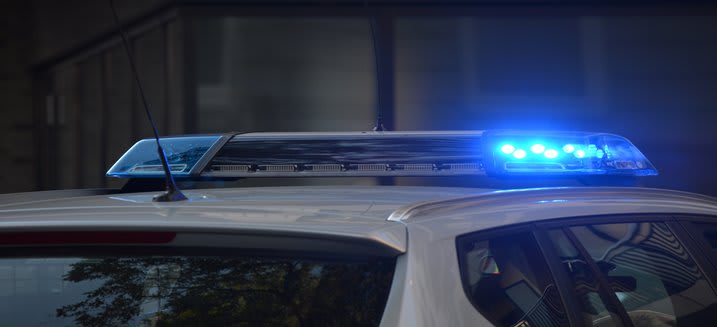

Sirens, lights, cars around you changing speed and direction to get out of the way; every driver has seen his or her fair share of emergency vehicles. Emergency vehicles include ambulances, fire engines and trucks, police cars, and privately-owned vehicles built for firefighters and life support agencies. In the case of an emergency, these vehicles sound their sirens and flash their lights to alert passerby to make room. Emergency vehicles need to get to their destinations as quickly as possible. They are allowed to bypass red lights, drive along shoulders and in the opposite direction, speed, and more to reach their destination in the shortest amount of time. All this must be done while maneuvering through traffic safely.
To help emergency vehicle drivers do their job, the general driving public must react appropriately when they see or hear one. Though specific laws may differ between states, the acronym “SIREN” is beneficial to know what to do in most situations:
Stay Alert. ** While this applies to driving in general, staying alert means keeping your eyes on the road and noise level within the car low enough to hear any potential sirens. If you do hear sirens or see an emergency vehicle, crack a window for better hearing and watch out for any pedestrians. **Investigate. Check all your mirrors to gauge the emergency vehicle’s approaching speed and decide on where and when to pull over. React. Use your best judgment to react quickly and calmly when pulling over. Look in all directions before doing so and be sure to use your turn signal. Don’t slam on your brakes or pull over without signaling. Enter. After the vehicle has passed, re-enter the road after looking in all directions, signaling, and gradually merging into traffic. Never. Do not ever stop where there isn’t enough room to pull off the road safely. Additionally, don’t follow an emergency vehicle to go fast or try to outrun one.
The above rules provide a basic outline of what’s expected of you as a driver. You should know what to do if you notice an emergency vehicle approaching behind you, in front of you, at an intersection, and when it’s stopped. Be aware of what to do in these 4 stated scenarios:
1. Emergency Vehicle Approaching from Behind
Slow down safely and check your surroundings when you become aware of an emergency vehicle approaching from behind you. Do not pull over immediately, even though that may be your initial reaction. You need to check for any pedestrians, cyclists, or other cars beforehand. Use your blinker to pull over once you find a clear path to the road’s shoulder. Do not rejoin traffic until there is room. Again, look for a space between cars and use your turn signal. Remember SIREN.
2. Emergency Vehicle Approaching in Front
Even when an emergency vehicle is coming from the oncoming lane, you typically still want to pull to the side of the road. Unless there’s a barrier between your direction and oncoming traffic, an emergency vehicle may drive on the wrong side off the road to move around dense traffic. Pulling over opens up your lane to emergency responders. Plus, you don’t want an emergency vehicle approaching from the front in the same lane as you for both your and the other driver’s safety.
Pull over with the same caution as you would with an emergency vehicle coming toward you from behind.
3. Emergency Vehicle Approaching While at an Intersection
Should you see an emergency vehicle near an intersection, your action depends on whether you are stopped or in motion. If you are stopped, and there is room to move over to the right side of the road, do so when safe. Otherwise, stay put. Even if your traffic light turns green, or it’s your turn to go at a stop sign, wait until the emergency vehicle has passed. They may be crossing in front of you, or use a center yellow lane (or “deadman’s lane”) to get around traffic.
If you are crossing an intersection when the emergency vehicle approaches from any direction, do not stop or pick up speed. Never stop in the middle of an intersection; continue through it, then safely pull over to the side of the road. Don’t drive faster to get through a green light or turn ahead of an emergency vehicle, or race after one to make the light.
4. Emergency Vehicle Stopped on Road
A stopped emergency vehicle usually continues flashing lights and is at the scene of an accident. Slow down and move over a lane if space is available. Some states require drivers to slow down to up to 20 mph below the speed limit. In general, reduce your speed enough for safe pulling over. Move with caution if traffic or other obstacles prevent you from shifting lanes. Your main concern is to give the emergency vehicle and its operators space to do their job.
What To Do When You See an Emergency Vehicle
When you see a police car, firetruck, ambulance, or other emergency vehicle coming from any direction, be on high alert for your next move. In addition to SIREN and the listed scenarios keep these tips in mind:
Stay approximately 300-500 feet behind an emergency vehicle; don’t follow after one. Use your hazard lights while pulled to the side of the road to alert other drivers. Check for any additional emergency vehicles approaching before pulling back onto the road. You may need to stay put for several to pass. Emergency vehicles are equipped to aid a variety of crises. Letting them get to their destinations as efficiently as possible may save a life.



